Best Wireless Keyboards 2024
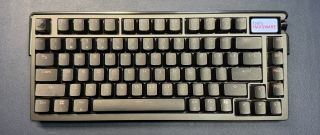
The best gaming keyboards are designed for gaming — not typing. They're designed for speed, performance, and convenience — not to make typing feel so blissfully sublime that you want to spend all day writing just so you can listen to the sound. But what makes a great mechanical keyboard not for gaming? If speed and performance aren't your priorities, the perfect keyboard becomes a lot more subjective.
Mechanical keyboards are a hobby that you can spend hundreds — or thousands — of hours and dollars on. But you don't have to — at least, not right away. For those who aren't interested in mechanical keyboards as a hobby, a great mechanical keyboard needs to sound and feel fantastic right out of the box — it needs to be compatible with a variety of devices and have customization options that you don't have to go to school to understand. And for hobbyists (or wannabe-hobbyists), a great mechanical keyboard has to have the flexibility to be upgraded, tweaked, and fine-tuned when you eventually do have the interest/time/money to do so.
We've tested many mechanical keyboards — both for gaming and not for gaming — over the years, and these are the best options for hobbyists and non-hobbyists alike.
Best Mechanical Keyboards You Can Buy Today
Why you can trust Tom's Hardware Our expert reviewers spend hours testing and comparing products and services so you can choose the best for you. Find out more about how we test.
Best mechanical keyboard for most people

Best for most people
Specifications
Switches: Nuphy Mint, Lemon, Raspberry, Cherry MX Silent Red
Backlight: Per-key RGB
Size: 5.31 x 12.6 x 0.83 (front)/1.29 (back) inches
Weight: 2.47 pounds
Reasons to buy
+ Excellent typing experience High speed wireless for gaming Highly programmable RGB showcase Built to an enthusiast’s standard
Reasons to avoid
- Lemon switches alter RGB Massive range in battery life Halo light doesn’t provide even lighting
The mechanical keyboard hobby can be expensive — very expensive — but it doesn't have to be. The Nuphy Halo75 V2 is a wireless pre-built mechanical keyboard with a 75-percent layout that offers a fantastic, enthusiast- level typing experience out of the box — and it retails for just $130.
The Halo75 V2 is the second iteration of Nuphy's full-height 75-percent mechanical keyboard, and it comes in five colors: "ionic" white, "obsidian" black, "mojito" (pale green), "blue lagoon," and "sakura fizz" (light pink). Each color comes with matching double-shot PBT keycaps in an mSA profile and your choice of switch (Nuphy Mint, Nuphy Lemon, Nuphy Raspberry, or Cherry MX Silent Red) installed; the keyboard also has a hot-swappable PCB so you can easily swap in switches of your choice. The keyboard has a sturdy, premium aluminum top case and a frosted plastic bottom, which allows for its built-in RGB to (literally) shine — the bottom half of the keyboard lights up, creating a "halo" around it on your desk. It looks good, even if the lighting is a little inconsistent.

More important than its lighting and looks, however, is how the Halo75 V2 feels. And it feels, according to our reviewer, "sublime" to type on. Our review sample featured Nuphy's Lemon (tactile) switches, which feels similar to Cherry MX Brown switches — but refined, with smoother movement, a more pronounced tactile bump, and a more defined sound when bottoming out. The keyboard features a gasket mount design with a polycarbonate plate, and the inside of the keyboard is dampened with silicone and acoustic foam that allows for crisp keystrokes with a pronounced "pop." This is the best-sounding keyboard you'll find in this price range, regardless of which switches you decide to use.
The Halo75 V2 isn't really a gaming keyboard, but it does feature a low-latency 2.4GHz wireless connection (along with Bluetooth 5.0) and is fully programmable using the open-source VIA platform, so it performs well as a gaming keyboard.
The Nuphy Halo75 V2 isn't the absolute best mechanical keyboard on the market, but it's a great option for people who are looking for the best typing experience for their buck. The Halo75 V2 sounds and feels like a much more expensive keyboard, offers enough customizability to support hobbyist tinkering, and even has built-in 2.4Ghz wireless for gamers. Its 75-percent layout is one of the most popular layouts — it ditches the 10-key numberpad but retains the function row and several of the navigation keys while still staying fairly compact — but if you need a bigger keyboard Nuphy also makes the $140 Halo96 V2.
Read: Nuphy Halo75 V2 Review
Best budget mechanical keyboard
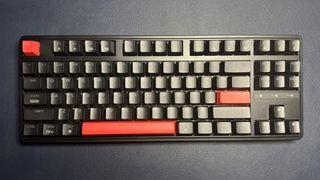
2. Keychron C3 Pro
Best budget mechanical keyboard
Specifications
Switches: Keychron mechanical switch
Backlight: North-facing red LED
Size: 14.35 x 5.43 x 1.25 inches
Weight: 2.42 pounds
Reasons to buy
+ Often found for under $30 Gasket mount design 1,000 Hz polling rate and n-key rollover
Reasons to avoid
- Not hot-swappable All-plastic build
The Nuphy Halo75 V2 isn't too expensive at $130. But if you're looking for a budget option, you can't get much cheaper than the Keychron C3 Pro, which "officially" retails for $50, but can often be found on sale for as low as $25 (I've never seen it priced at more than $38 or so).
The C3 Pro is a wired pre-built mechanical keyboard with a TKL layout (no numberpad, full function row, and full navigation cluster) and a flexible, gasket mount design. It comes in one color — black with red accents — and can be purchased with Keychron's Red (linear) or Brown (tactile) mechanical switches. The keyboard is entirely plastic and features double-shot ABS keycaps with shine-through legends (and it comes with extra keycaps for those who dislike the red accents) and red backlighting. It comes with a detachable USB-C cable and a keycap/switch puller in the box.
The C3 Pro offers a surprisingly pleasant typing experience, thanks to the smooth switches and gasket mount design. Our review model came with Keychron Red (linear) switches, which offered smooth, stable keypresses and felt crisp but didn't make too much noise. The gasket mount made for a springier, more comfortable typing experience overall — I don't normally like linear switches, but the C3 Pro is a solid performer, especially at its price point. It's not a gaming keyboard, but it does have a 1,000 Hz polling rate over its wired connection, as well as full n-key rollover, and all of its keys can be programmed with QMK / VIA. So — it's not a gaming keyboard, but you can use it for gaming.
There are some downsides to the C3 Pro — while its case is sturdy, it's still an all-plastic, budget-priced keyboard, so it won't look or feel quite as solid and sexy as an all-aluminum keyboard (such as the Lemokey L3, from Keychron's gaming sub-brand). It does have wire management grooves and flip-out feet on the back, however, which is a nice touch (and unnecessary considering its USB-C cable is detachable). It's also not hot-swappable, though you can pick up a hot-swappable version for under $50 (MSRP: $60).
The Keychron C3 Pro isn't particularly flashy or premium-looking, but it's a solid, gasket-mounted mechanical keyboard with full backlighting, impressive typing performance, and a 1,000 Hz polling rate — and, if you wait for a sale, it costs less than $30.
Best low-profile mechanical keyboard
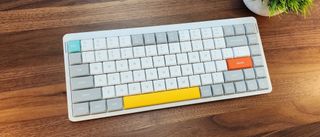
Best low-profile mechanical keyboard
Specifications
Switches: Gateron Low-profile Mechanical (KS-33)
Backlight: RGB-LED
Size: 12.5 x 5.2 x 0.59 inches (316.4 x 132.5 x 13.5 mm)
Weight: 1.31 pounds (598 grams)
Reasons to buy
+ Much better battery life Great keycaps and improved switches 1ms wireless for gaming Improved sound and feel
Reasons to avoid
- Benefits from a palm rest (not included) Flat keycap profile takes some getting used to
If you're looking for a mechanical keyboard, you're probably not looking for something "low-profile" — as that generally implies you'll be making sacrifices in feel and sound for the convenience of something slim and portable. And you will have to make some sacrifices with the Nuphy Air75 V2 — but they're not nearly as big as you think.
The Nuphy Air75 V2 is a low-profile wireless mechanical keyboard with a slim case and low-profile switches, but it still feels and sounds very good. The Air75 V2 comes in three colors — black, gray, and white — with matching double-shot PBT keycaps (featuring Nuphy's signature bright accent keys) and your choice of Gateron low-profile switches in Cowberry (linear), Wisteria (tactile), Aloe (light-weight linear), Moss (heavier tactile), Blue 2.0 (clicky), Brown 2.0 (tactile), or Red 2.0 (tactile). Our reviewer tested the Air75 V2 with Gateron Daisy 2.0 switches, which are linear and have 48gf of actuation force, but this option is not currently available — however, the keyboard also has a hot-swappable PCB, so you can bring your own switches, though the keyboard only supports low-profile Gateron switches (other low-profile switches, such as those from Kailh, won't work).
This variety of switch options means you can start fine-tuning your typing experience before you even get the keyboard. The Air75 V2 also features layers of sound dampening material in its (very slim) case, including two separate layers of foam to absorb ping and reverb and add a creamy "pop" to the sound. The keyboard's thick, double-shot PBT keycaps feel solid and the new low-profile switches have 75 to 80 percent of the travel distance of a standard MX-style switch, despite being half the height. This means that it feels closer to a standard-height keyboard, while still retaining the slimness and convenience of a low-profile keyboard. The Air75 V2 also features low-latency 2.4GHz wireless connectivity alongside its built-in Bluetooth, so it will work as a gaming keyboard even if it isn't really designed to be one. All of its keys are programmable with QMK / VIA, and it does have backlighting (albeit, lackluster, as the keycaps are not shine-through).

Of course, this keyboard isn't just about typing — it's also about portability and convenience. The Air75 V2 is a little over half an inch (13.5mm) thick, and measures 12.5 inches (316.4mm) wide by 5.2 inches (132.5mm) deep. It has a compact 75-percent layout, which includes the full function row and a column of navigation keys, all squeezed together in a neat, space-free block. The keyboard weighs 1.31 pounds (598g), which isn't quite as light as the 1.07-pound (485g) Lofree Edge but is over half a pound lighter than the 1.94-pound (880g) Logitech G515.
The Nuphy Air75 V2 is small, slim, and lightweight — perfect for travel — but it won't force you to give up the mechanical keyboard typing experience completely. Low-profile, high-travel switches and two layers of sound damping foam make the Air75 V2 very pleasant to type on. And the low-latency wireless connectivity is just a bonus.
Read: Nuphy Air75 V2 Review
How we test mechanical keyboards
Peripherals are about more than just pure performance. They're about convenience, comfort, usability, and, yes, aesthetics. We inspect each keyboard's build quality, inside and out — case materials, top plates, keycaps, stabilizers, gaskets, and foam and other sound-dampening materials. We also take note of any accessories that come with the keyboard (cables, wrist rests, extra keycaps and switches, etc.) and at the keyboard's customization and adjustability options.
We spend a couple of weeks using the keyboard as our primary input source for work and play: writing, gaming, chatting, etc. We take a typing test at the beginning of our time with each keyboard and several throughout testing to see how well the keyboard's elements fit together and how easy it is for us to adapt to the keyboard's keycaps, layout, and overall feel.
We test the keyboard's performance by playing a variety of games, including fast-paced first-person shooters and battle royales as well as open-world RPGs and MMORPGs. If the keyboard is wireless, we test the strength, consistency, and latency of the wireless connection, as well as the keyboard's battery life and how well performance holds up at lower battery levels.
If a keyboard is hot-swappable, we swap in our favorite switches and see how that changes the typing experience. We also test and review the included switches, as people buying pre-built keyboards probably aren't looking to immediately swap out the switches. We also test the keyboard with any included software (or, if compatible, QMK / VIA) to see how easy it is to program and customize keymapping, settings, and RGB/backlighting (if applicable).
Shopping Tips for mechanical keyboards
✅ Switches are key: Much of what makes a fantastic mechanical keyboard comes down to the switches, and switches are very subjective. You should pay attention to both switch type (tactile, clicky, linear) and individual switch specs, including actuation force and total travel, depending on what kind of typist you are. For typing, most people tend to prefer tactile or clicky switches (depending on how obnoxious they want to sound to those around them). Linear switches are mainly aimed at gamers, as they're designed for speed and not tactile satisfaction.
▪ Clicky (audible click, tactile bump): Blue, Green, White
▪ Tactile (no audible click, tactile bump): Brown, Clear
▪ Linear (quiet, no audible click or bump): Red, Silver
✅ Hot-swappability: Many keyboards feature a hot-swappable PCB, which means you can change the switches without having to break out a soldering iron. If you haven't found your perfect switches yet, this is a good option — just make sure to double-check the parameters, as cheaper hot-swappable keyboards won't always be compatible with a variety of switches.
✅ Case material: Most keyboard cases are made of plastic, metal (aluminum), or some mix of the two. More expensive, premium keyboards will often have full, solid aluminum bodies, which gives them a nice heft that won't slip around on your desk. But metal cases can sound tinny and hollow if they don't have enough sound-dampening material inside, so it's not just the outside that matters. Also, metal cases don't often come with adjustable feet. If you like to angle your keyboard toward you, it might be easier to stick with one that has a plastic bottom and flip-out feet.
✅ Layout: There are several keyboard layouts you'll come across, but the most popular tend to be the 75-percent and TKL layouts — large enough that you're not making sacrifices, but not unnecessarily big. Here's a quick rundown of the layouts you're likely to see:
⌨ Full-size: Has between 104 and 108 keys, including a 10-key number pad, arrow keys, a full function row, and a 9-key navigation cluster. Often has extra keys, such as dedicated macro keys, as well as dedicated media keys that can usually be remapped.
⌨ 96-percent: Usually drops some or all of the navigation keys but keeps the 10-key number pad. A compact (read: squashed) full-size layout.
⌨ TKL: Tenkeyless, or TKL, refers to the fact that this layout drops the 10-key number pad. That's the only key cluster it drops, however — it still has function keys, arrow keys, and nine navigation keys.
⌨ 75-percent: A more compact TKL layout that also drops some of the navigation keys. Instead of the standard 3 x 3 navigation cluster, a 75-percent layout usually has a single column of 3 - 5 navigation keys and/or a rotary dial.
⌨ 70-percent: The 75-percent layout minus the function row.
⌨ 65-percent: Here's where it starts to get muddled. 65-percent keyboards are usually as ultra-compact as you can get without dropping the arrow keys, but we've seen '65-percent' used to refer to keyboards with both arrow keys and a function row (technically a 70-percent layout), as well as keyboards with arrow keys, a function row, and a column of navigation keys (technically a 75-percent layout).
⌨ 60-percent: The most compact you can get — no number pad, navigation cluster, function row, or arrow keys. 60-percent is sometimes used to describe keyboards with arrow keys (technically a 65-percent layout).

 1 month ago
12
1 month ago
12
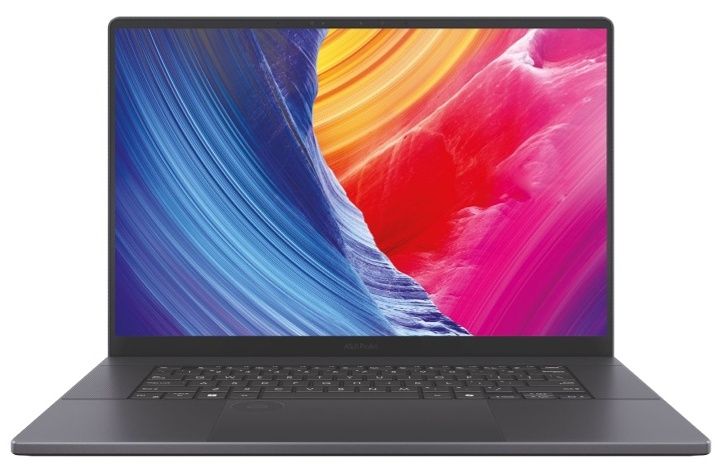
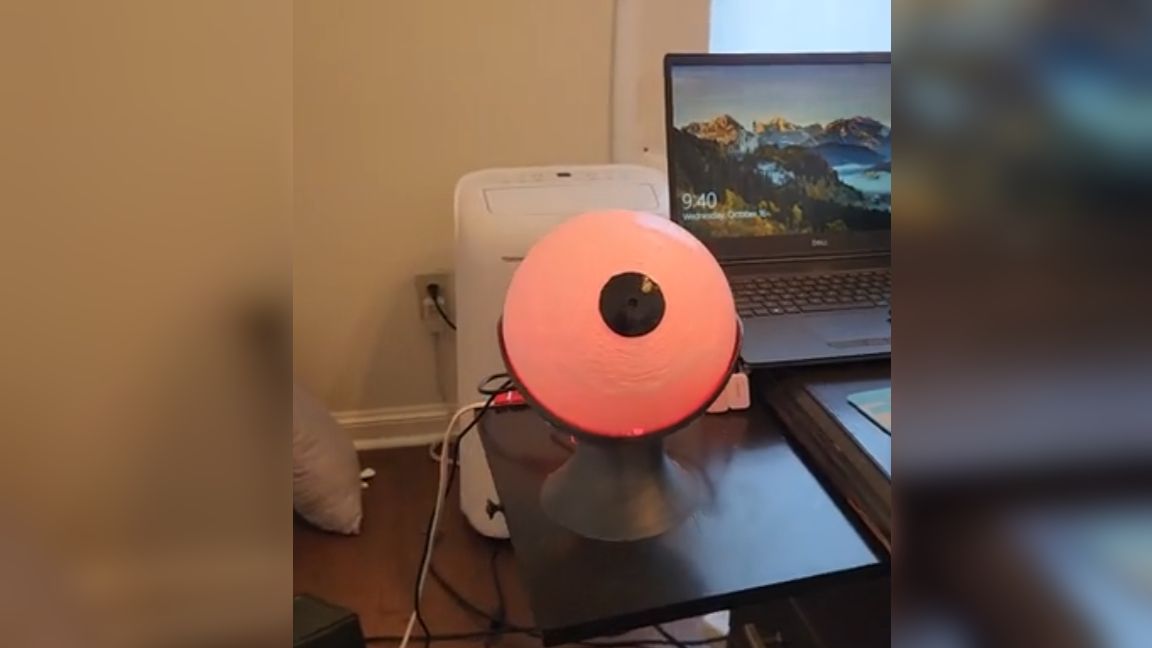
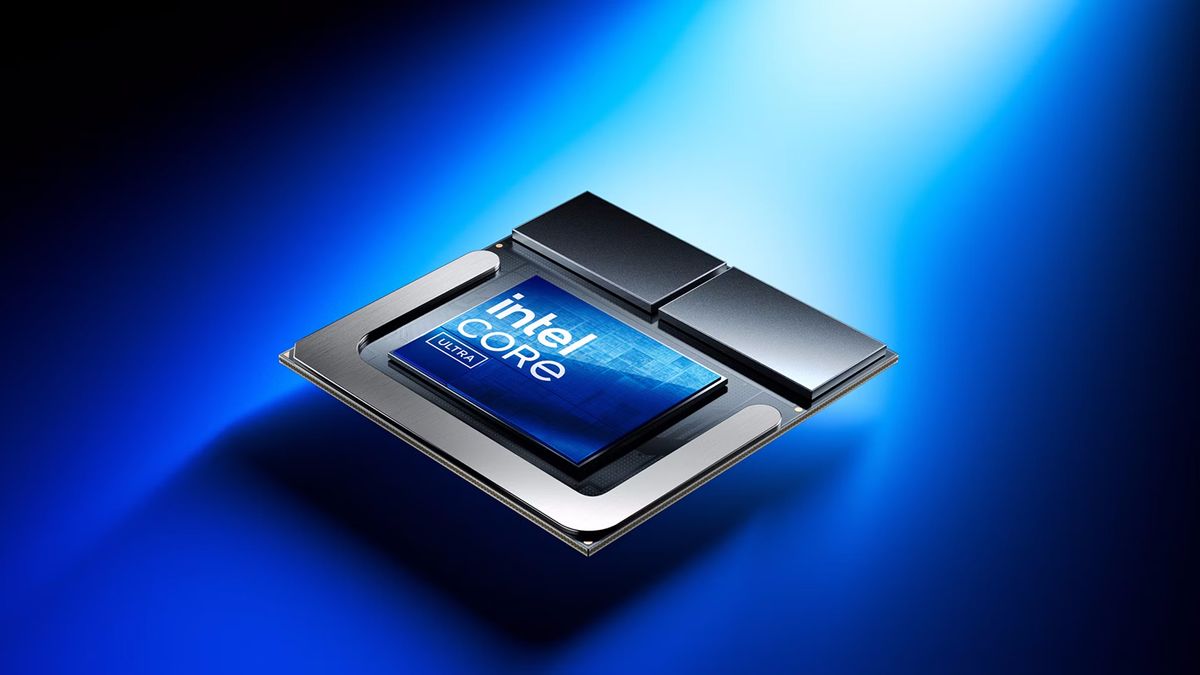


:quality(85):upscale()/2024/10/17/848/n/1922729/9dece426671163b35dcb11.60305022_.jpg)


 English (US) ·
English (US) ·